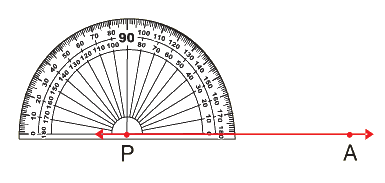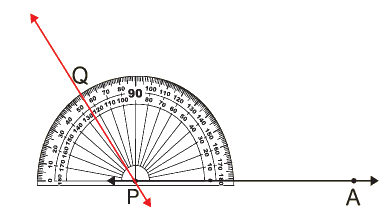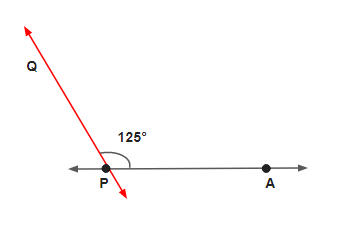
PUMPA - SMART LEARNING
எங்கள் ஆசிரியர்களுடன் 1-ஆன்-1 ஆலோசனை நேரத்தைப் பெறுங்கள். டாப்பர் ஆவதற்கு நாங்கள் பயிற்சி அளிப்போம்
Book Free DemoStep 1: Draw a line segment PA.

Step 2: Place the protractor on the line segment PA and the mid point of the protractor at point P, as shown in the figure.

Step 3: On PA from the right side of the protractor start counting from 0° in the ascending order (counter-clockwise direction) and finally mark a point Q using a sharp pencil at the point between 120° and 130° showing 125° on the semicircular edge of the protractor.

Step 4: Remove the protractor and join PQ.

We get the required angle ∠APQ = 125°.